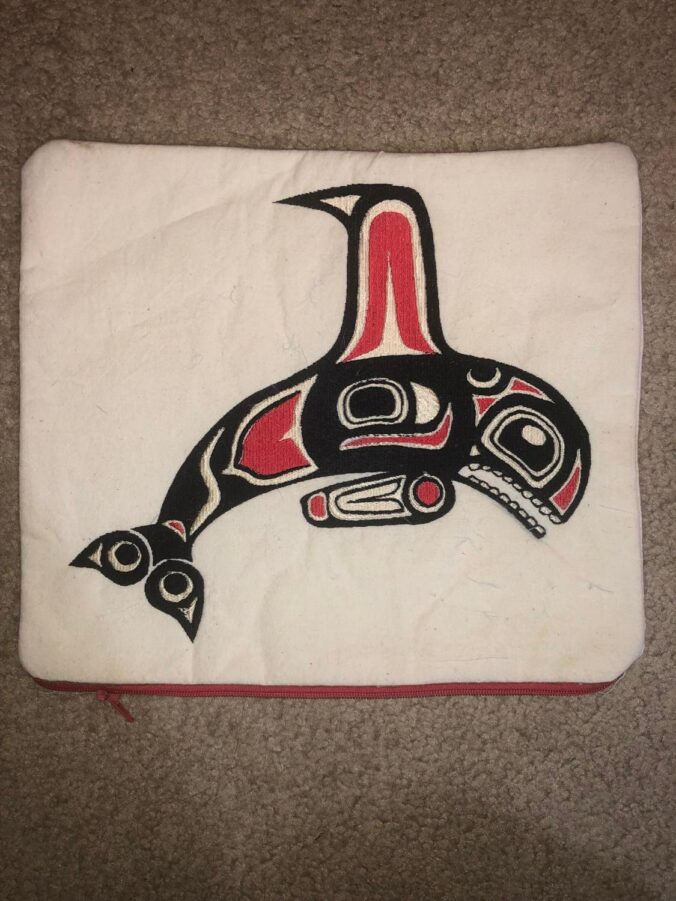When I was in grade three, I did weekly assignments on the Haida people and explorers. For some assignments, we were told to follow a topic. I made this bag to demonstrate Haida art physically.
I believe that this bag is considered cultural appropriation. The bag has nothing to do with Haida culture other than the whale embroidered on the front. Since this was a guided inquiry, the class did not dive into the symbolism in the designs but the materials used and the resources they had. Not only that, but as a white person taking their design without regard to the Indian Act, which banned Indigenous culture and then bringing it into class as an assignment without knowing the meaning behind the art furthers the oppression and racism that went on and continues to go on.
To make this assignment more appreciative, I would have students learn more about the design and meaning behind the whale. I would also want students to research how the Haida people designed and painted their art and have the students try it the same way. This way, I can ensure we are making the art the intended way, and students will learn the history and understand more about their culture.
To shift consciousness using one of Gorski (2008)’s steps, I would use “shift no. 1: cultural awareness is not enough” (Gorski, 2008). When I was making the bag, I was aware of Haida culture and artwork and knew that they had whales in their art since they lived near the water; however, it is not enough to know about it. The student needs to understand the history and oppression as well as the power in play. By recreating the art, I was taking credit for the design and contributing to the oppression that Haida people face when trying to get their art seen and recognized.
Gorski, P. C. (2008). Good intentions are not enough: A decolonizing intercultural education. Intercultural Education, 19(6), 515–525. https://doi.org/10.1080/14675980802568319

Leave a Reply